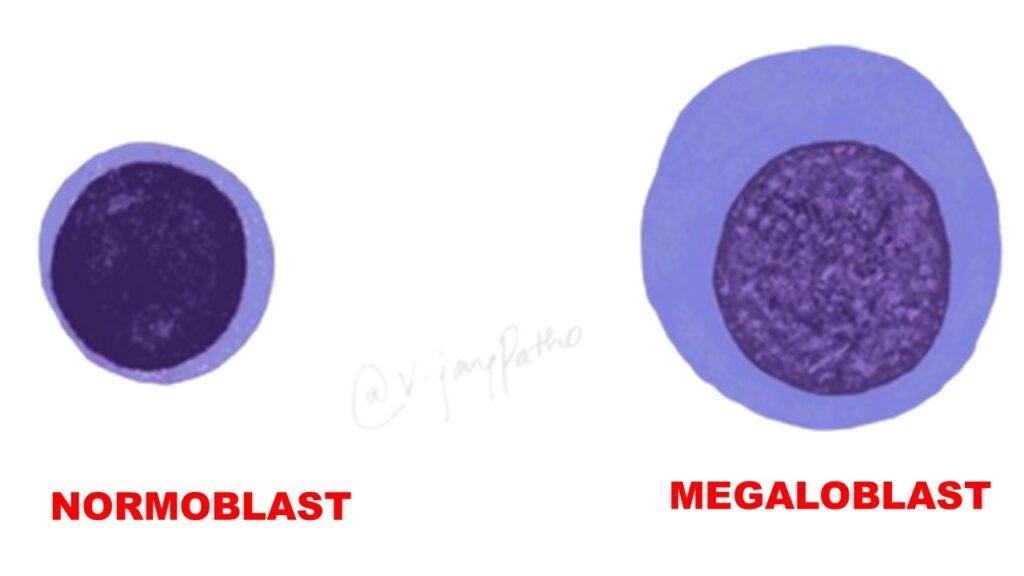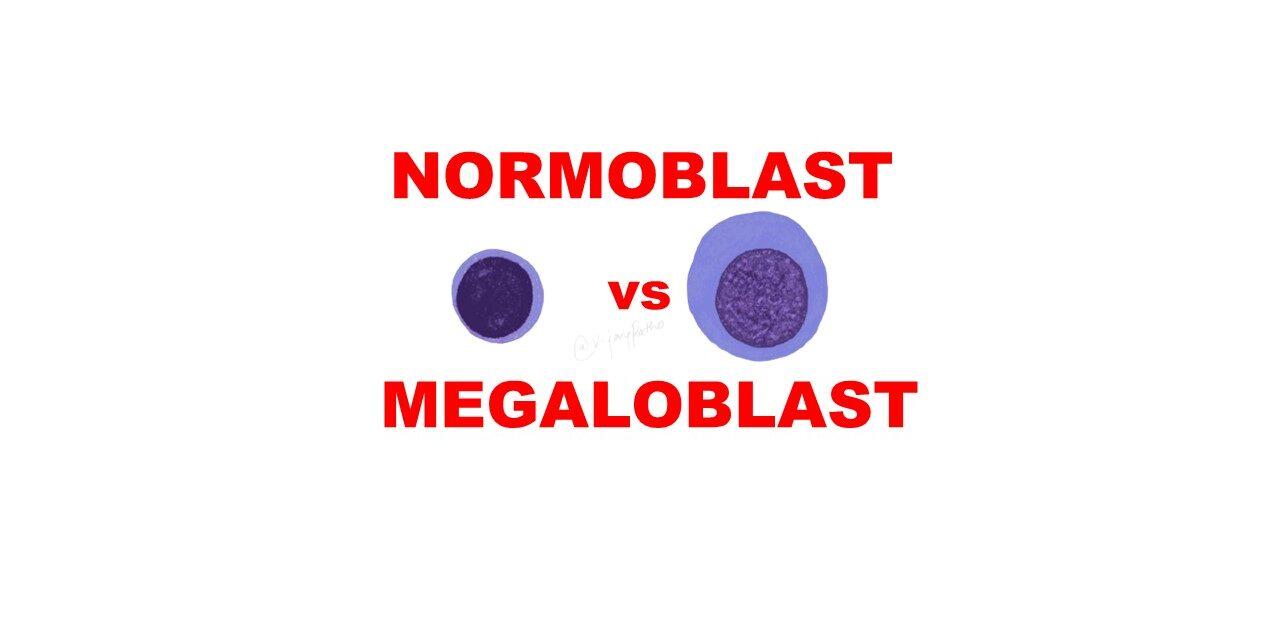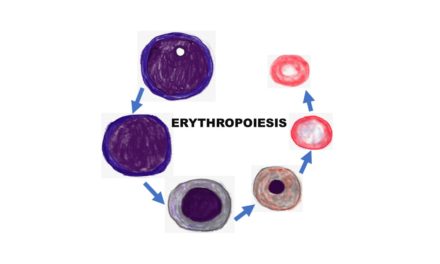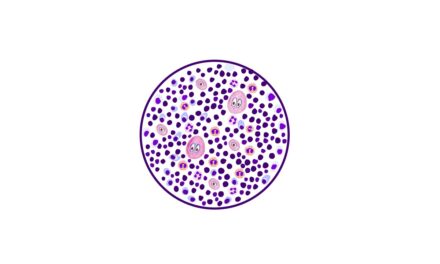Red blood cells/erythrocytes, are vital for transporting oxygen throughout the body. They undergo a series of developmental stages before reaching their mature form.
Normoblast:
A normoblast is an immature precursor cell of red blood cells. During erythropoiesis (the process of red blood cell production), normoblasts develop from earlier progenitor cells in the bone marrow. They are characterized by their relatively smaller size and intense blue staining of the nucleus (due to the presence of RNA) when observed under a microscope.
Megaloblast:
Megaloblasts, on the other hand, are abnormally large and immature precursor cells of red blood cells. They are also produced in the bone marrow during erythropoiesis, but they exhibit distinct morphological differences compared to normoblasts. Megaloblasts are typically larger in size and have an irregular shape. Their nuclei appear enlarged and exhibit abnormal nuclear maturation, resulting in a characteristic “Sieve-like” appearance.
The “sieve-like pattern” refers to the appearance of the chromatin as if it were fragmented into irregular, lacy, or mesh-like structures within the nucleus. It gives the impression that there are gaps or holes in the chromatin, resembling the pattern of a sieve or a mesh.
During the development of normoblasts, their nuclei should mature in a coordinated manner with each nuclear division occurring at the same time and following a specific pattern. However, in megaloblastic anemias, due to deficiencies in vitamin B12 or folic acid, this coordination is disrupted. As a result, the nuclei of megaloblasts develop irregularly, with some parts of the nucleus dividing at different times and not following the usual pattern.
The consequence of this asynchronous nuclear maturation is the “sieve-like” or “lacy” appearance of the chromatin, which means that the genetic material inside the nucleus is unevenly distributed and fragmented, rather than being neatly organized.
The differences between a normoblast and megaloblast are tabulated as below
| Characteristic | Normoblast | Megaloblast |
|---|---|---|
| Size | Smaller | Larger |
| Nucleus | Intense blue staining | Enlarged, Sieve like chromatin |
| Nucleus-to-cytoplasm ratio | Higher | Lower |
| Cytoplasm | Less abundant | More abundant |
| Shape | Regular | Irregular |
| Maturation | Normal | Abnormal |
| There is nuleocytoplasmic -asynchrony. |

Clinical Significance:
Understanding the differences between normoblasts and megaloblasts is of clinical importance. An increased number of normoblasts may be seen in certain conditions, such as hemolytic anemias or during recovery from severe blood loss. On the other hand, megaloblasts are often associated with megaloblastic anemias, which are typically caused by deficiencies in vitamin B12 or folic acid.











Recent Comments